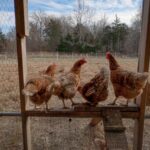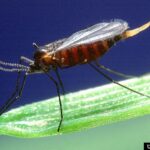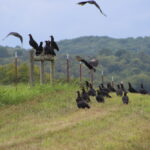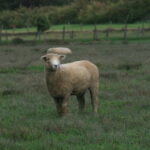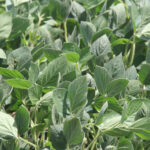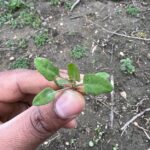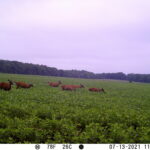Main Content
Rutgers Homesteading Academy Kicks Off Third Year with 3 Exciting Webinars
USDA/FPAC photo by Preston Keres. The Rutgers Homesteading Academy, a once-monthly lunchtime webinar series, was launched by Rutgers Cooperative Extension of Burlington County in October 2021. At that time, the COVID-19 pandemic was ongoing and many residents developed a keen interest in improved self-sufficiency. To date, we have offered 18 webinars that provide introductory information…
Hessian Fly and the “Fly-Free Date”
Hessian fly adult. Scott Bauer, USDA Agricultural Research Service, Bugwood.org. Hessian fly is a pest of wheat and other small grain crops that dates back to the Revolutionary War, when it was introduced to North America from Europe on imported straw bedding. Today, Hessian fly remains a pest of concern in all major wheat growing…
Corn Tar Spot Identified in New Jersey
The presence of Corn Tar Spot (Phyllachora maydis) has been confirmed in New Jersey. Laboratory examination of a corn sample from New Jersey revealed the presence of tar spot. Tar spot is a foliar disease of corn that commonly occurs throughout Mexico, Central America, South America, and the Caribbean. The disease was identified in the…
Dealing with Nuisance Vultures
Black vultures perching on a fence. Photo courtesy of Tennessee Farm Bureau. As scavengers, vultures play a critical role in nature’s clean-up crew and pose no threat to crop production in the Garden State. However, farmer conflicts with vultures can arise when Black Vultures prey on newborn livestock, or when problems associated with vultures roosting…
Spring Pasture Walk on June 1, 2023
Rutgers Cooperative Extension of Burlington County will host a spring pasture walk at the Burlington County Agricultural Center in Moorestown, NJ on Thursday, June 1, 2023 from 6:30 to 8:30 p.m. Pastures and their management will be discussed broadly as they apply to all livestock. Topics we plan to discuss include: Stocking density Grazing management…
Time to Complete Herbicide Training Requirements
Photo credit: USDA Photo by Cecilia Lynch. OTT Application of Dicamba Increased reports of off-target crop damage prompted the Environmental Protection Agency (EPA) to implement additional requirements for over-the-top (OTT) application of dicamba products in dicamba-tolerant soybean and cotton. Specifically, certified pesticide applicators must complete annual, product-specific training prior to the use of these products.…
Notes from Informative ‘Marketing Your Farm’ Webinar
The University of Vermont’s Tourism Research Center recently hosted an excellent webinar on marketing for retail farms. After an introduction from Lisa Chase, the Center Director, the discussion was kicked off by Myrna Greenfield, the “Top Egg” at Good Egg Marketing and author of the recently published book, “Marketing Your Farm: a practical guide to…
Lambsquarters Has Emerged
One of many Common Lambsquarters (Chenopodium album) weeds found in a garden in Burlington County on April 7, 2023. I was surprised to discover several Common Lambsquarters weeds in my garden last week with 2-6 true leaves. With the recent, summer-like temperatures, summer annual weeds are getting a jump on the season this year. As…
Early Wheat Disease Scouting
Spring is a busy time on the farm requiring many different tasks be completed in a short time frame; one of the tasks that can easily be overlooked is scouting small grain fields. As we prepare for the first application of nitrogen remember this is a perfect time to scout for foliar diseases like powdery…
Wildlife Damage to Agriculture: A Featured Topic at Upcoming Agricultural Convention
The agricultural impacts of wildlife damage are frequently discussed among the farming community in New Jersey. However, the extent of these impacts may not be as readily recognized by the non-agricultural public. Faculty and staff at the Rutgers NJ Agricultural Experiment Station have recently conducted a number of projects to document the economic and social…
